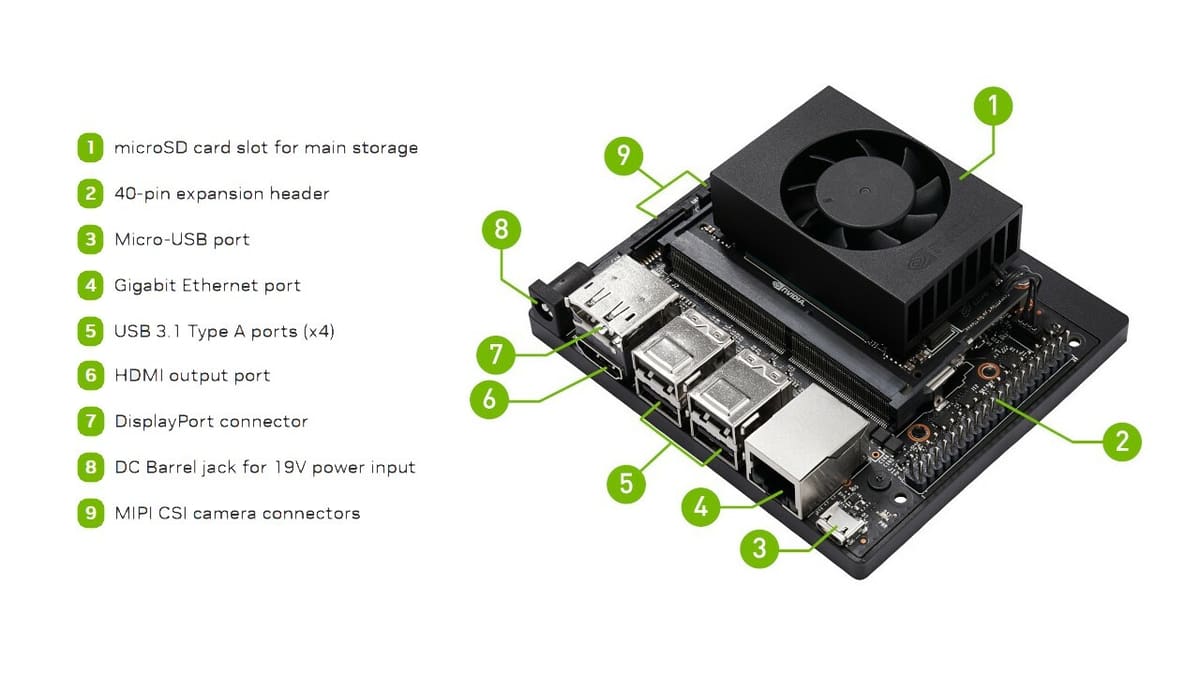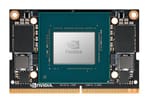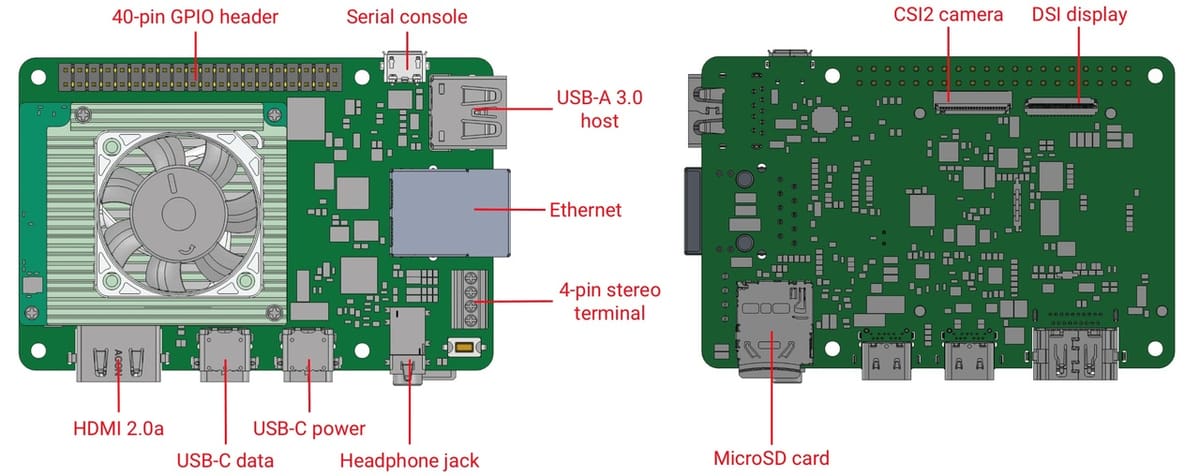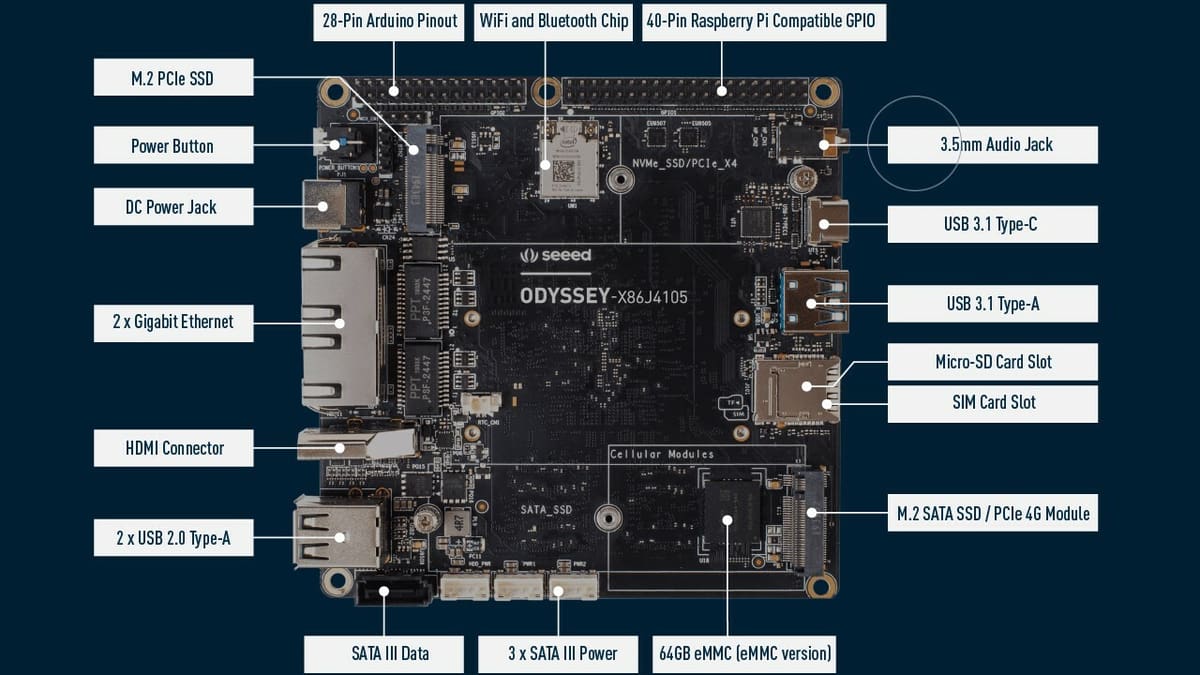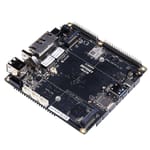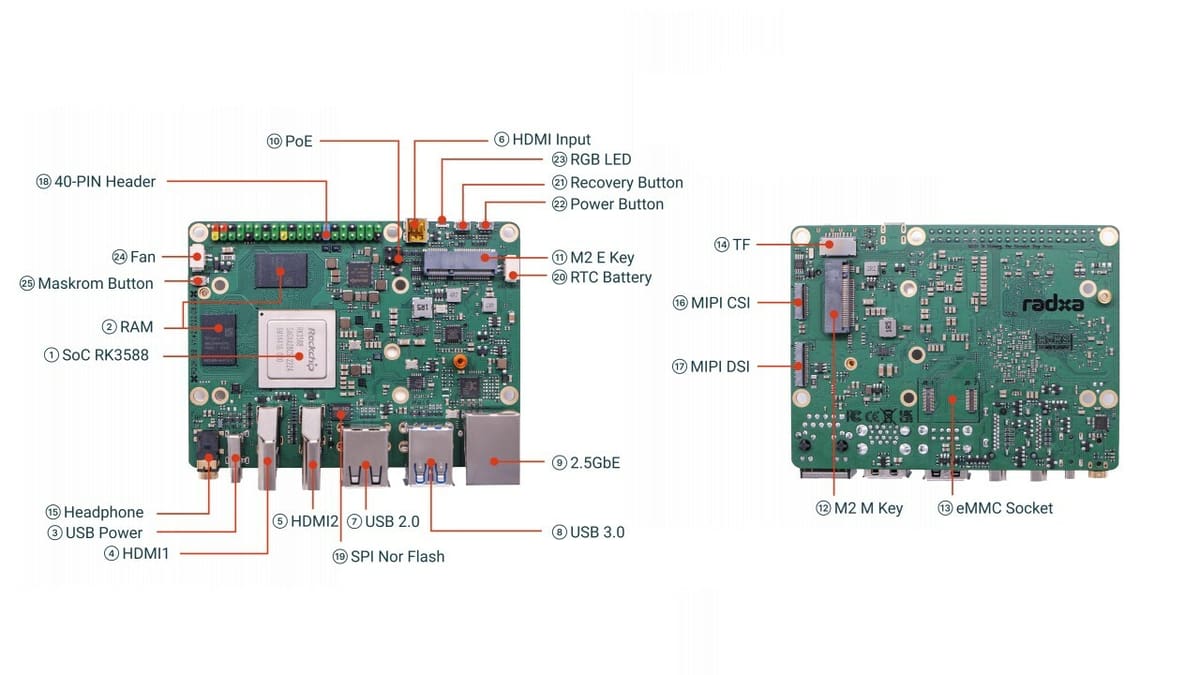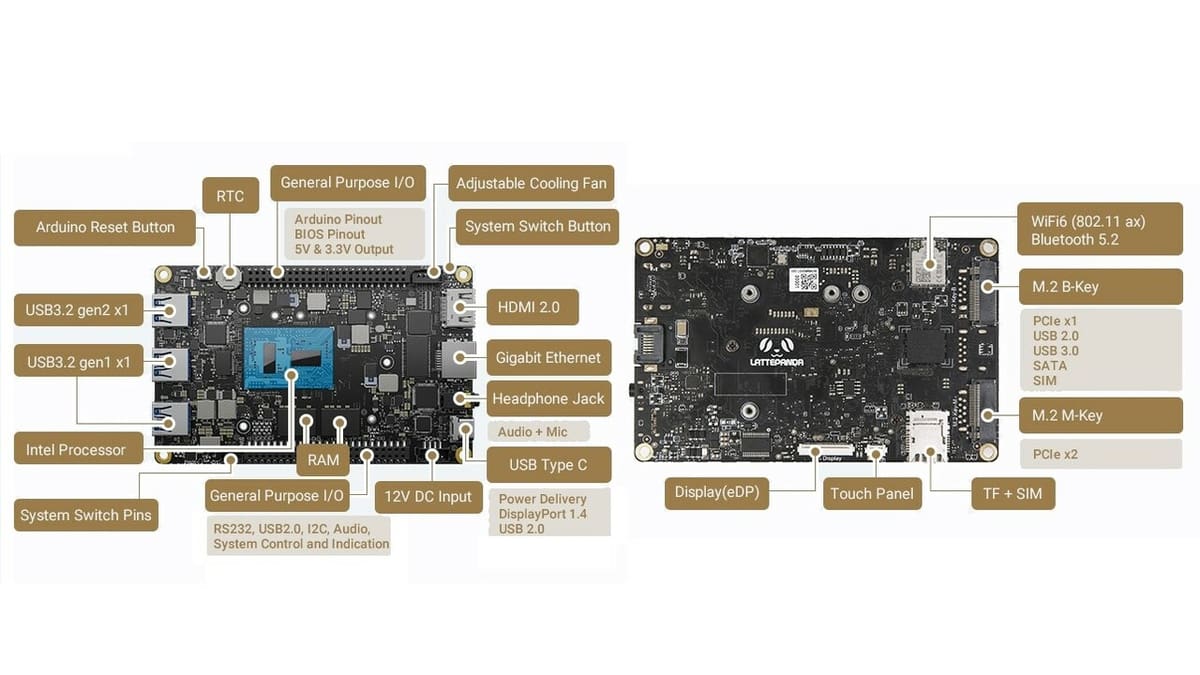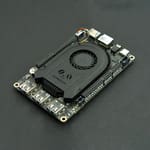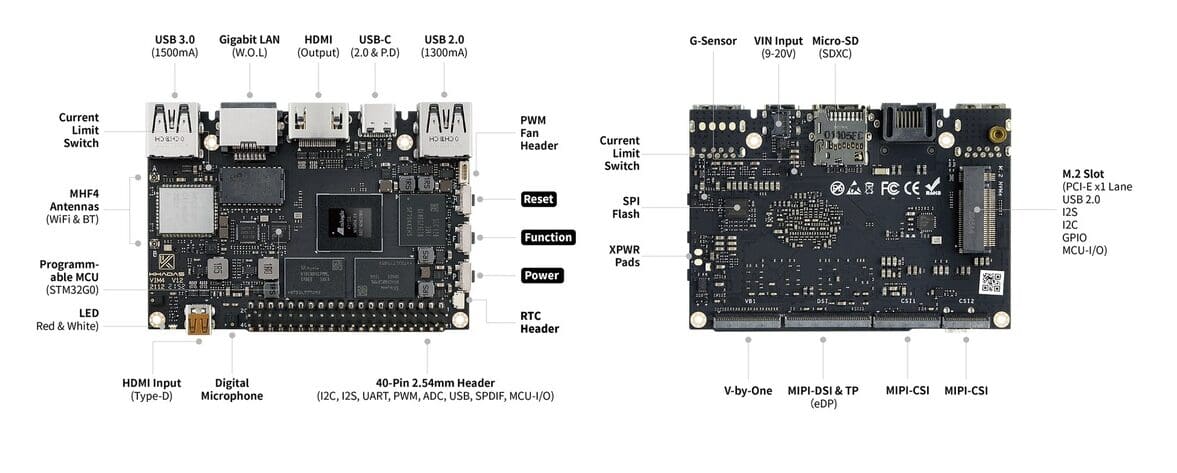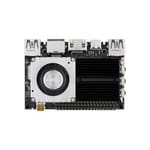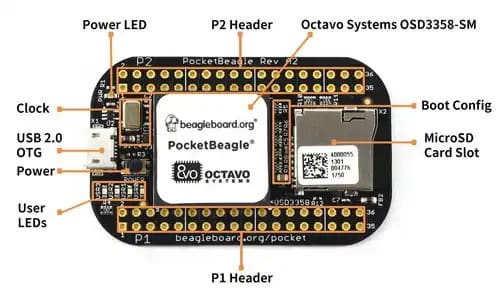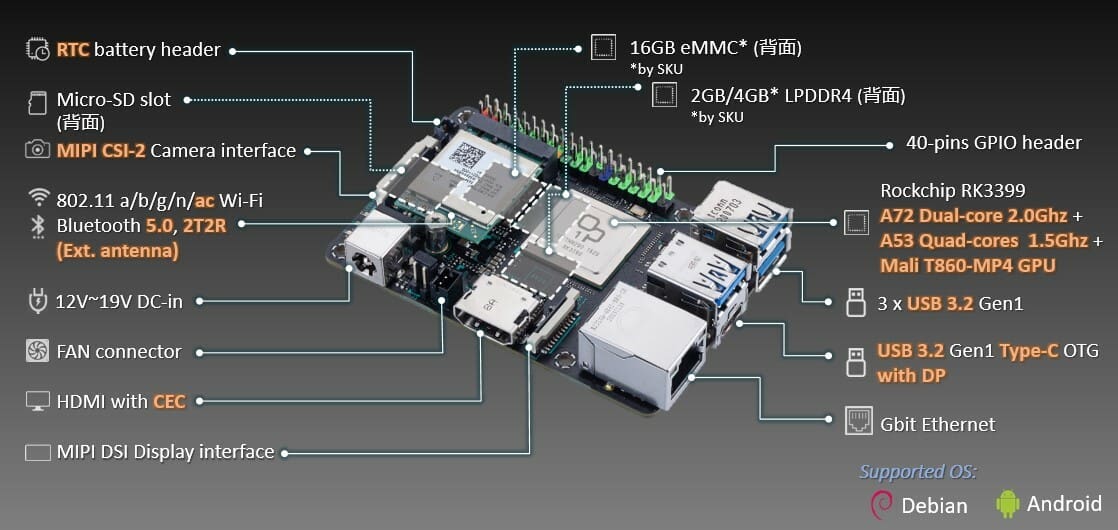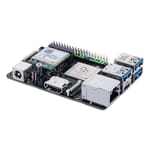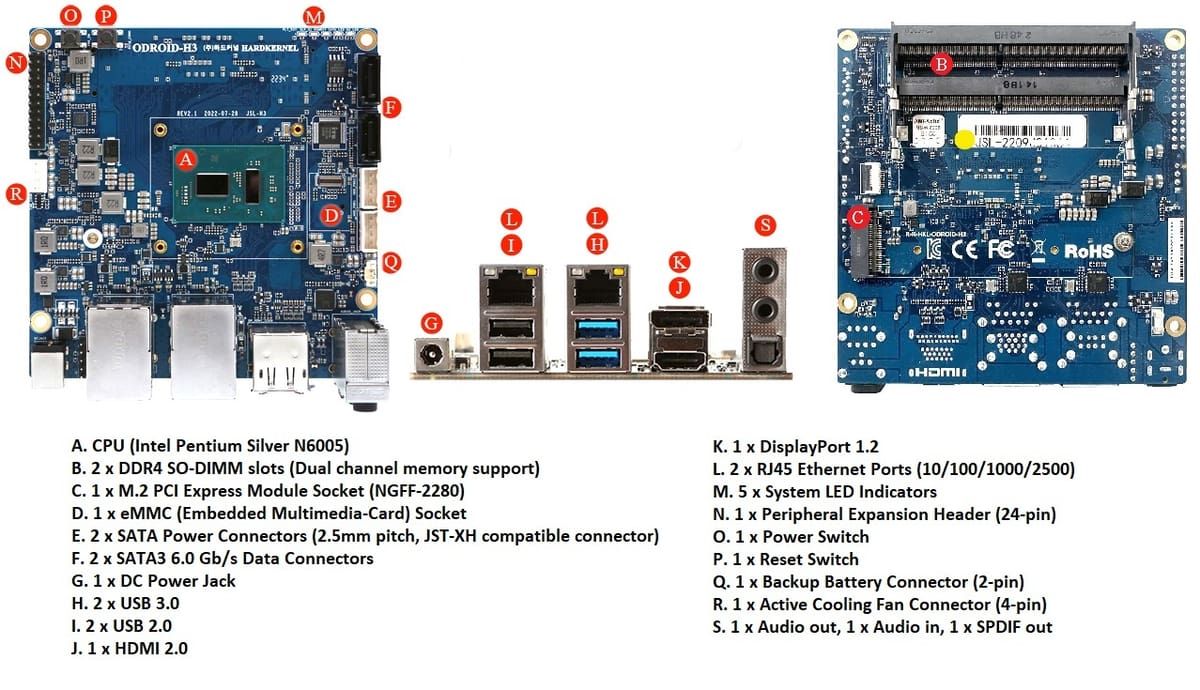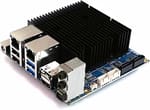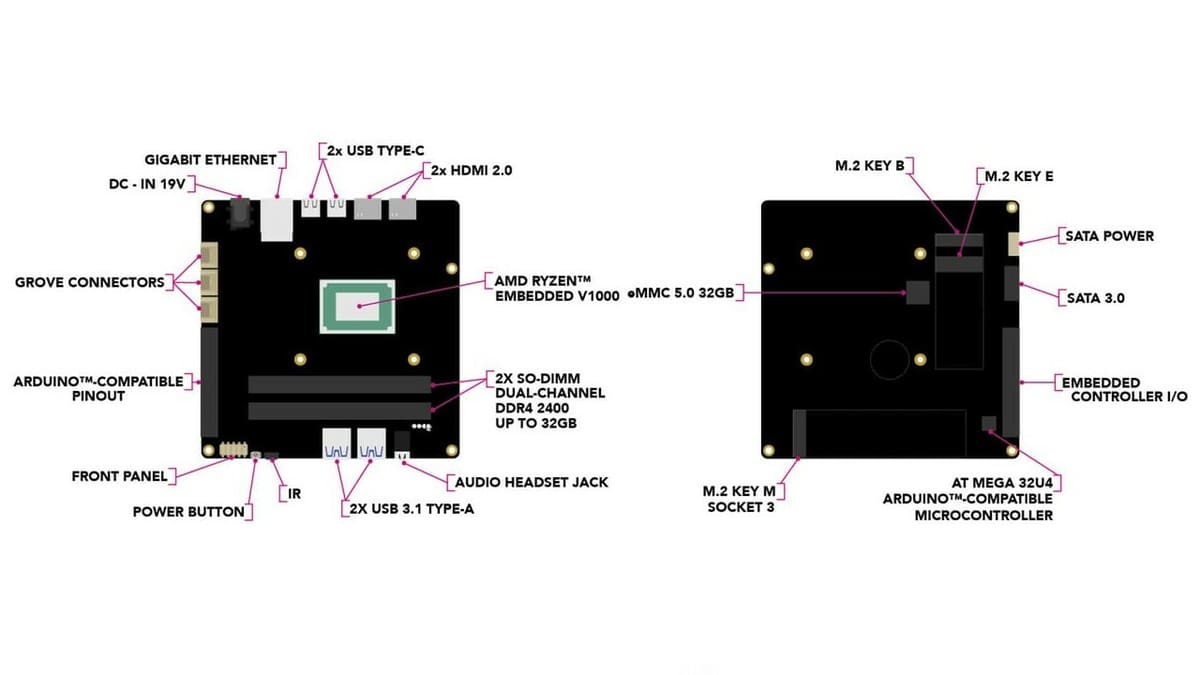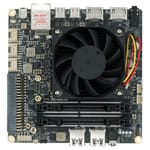When choosing a processing unit for a robot build, be it a single-board computer (SBC) or a microcontroller unit (MCU), it may be useful to consider not only your planned needs but also potential improvements and adjustments that may pop up during such projects. The variety of possible robotic devices that you can build is huge and depends on your creativity, skills, and of course, having a board capable of handling all your ideas!
You may initially be wondering if you even need an SBC or if a microcontroller could suffice. While many things are possible with microcontrollers, they won’t always be simple to update and they have much more limited memory. (This is why micro-controllers are best for less complex projects as they tend to be much smaller in size and consume less energy.)
Furthermore, if your robot needs to quickly process a lot of information in addition to storing a lot of data, a microcontroller won’t be able to help you much. This is where the right SBC can shine, but there are so many different options to choose from. Factors such as weight, cost, size, compatibility with other electronic components, and energy consumption need to be considered in the context of your robot.
Finding the perfect option is a challenge and the wrong choice can leave you with a lot of headaches or workarounds down the road. Don’t worry, we’ll help you find the SBC that fits your needs.
Considerations

Today the market has a wide variety of SBCs in terms of size, weight, I/O, consumption, and processing power. Each of these characteristics can influence your robot, so we collected a list with the intention of presenting varied options to meet many common needs of robotics projects.
There’s no singular best option of an SBC for robotics as a whole. A card strong in one feature is sure to have downsides when considering other aspects. After all, SBC makers seek to stand out with their differences, and that is what this article aims to sort out.
With robotics projects in mind, our list is curated with an emphasis on options that save energy and that have powerful processing and relevant features such as Wi-Fi or Gigabit Ethernet connectivity.
In addition to presenting boards with extraordinary features that span even AI and deep learning, it’s essential that SBCs for robotics projects have communication ports and GPIO headers to connect various electronic components, modules, and so on. However, this is only the beginning of possible features to consider.
Maybe you don’t need batteries for your robot as it’s fixed, but it needs very powerful processing. Or you just need a versatile and compact board that doesn’t consume a lot of energy. Everything will be very relative to the purpose of your robot, but you may be better off opting for extra features rather than underestimating what your needs are, as long as your budget allows for it.
Being the best board for your project is about having everything you need to execute your idea, so we’re going to break down some great SBC options to see what each one has to offer. You might not find a very popular model, but that doesn’t mean it isn’t good for robotics.
As a final note, we’ve listed the official price as stated by manufacturers where available, but because of the chip shortage, these may vary among resellers and stock may be limited.
Without further ado, let’s get into the options!
Nvidia Jetson Xavier NX
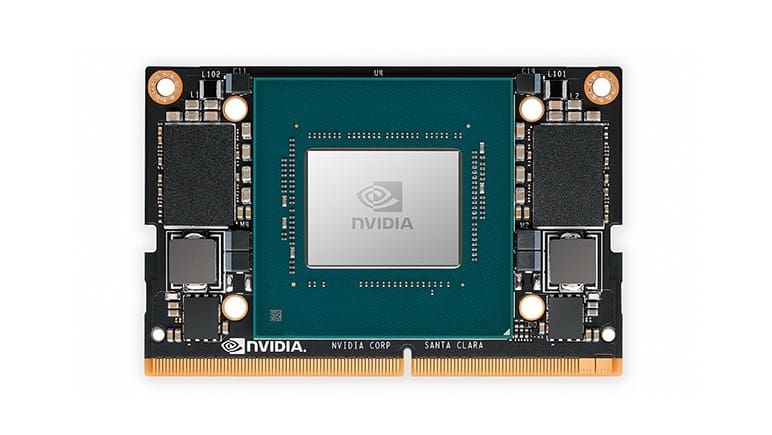
A member of the Jetson family since 2018, this system module in conjunction with the Dev Kit carrier board has enough power to run heavy AI applications or simultaneous neural networks. The Nvidia Xavier NX module can process up to 21 trillion operations per second, including high-resolution sensor data. The combination of a hexa-core processor with 59.7 GB/s bandwidth and 16 GB of memory makes this board ideal for critical AIoT applications that need cutting-edge performance, such as medical instruments and commercial robots.
Other features that make this board ideal for robotics are the combination of high-speed I/O sets like CSI and PCIe, low-speed I2Cs and GPIOs, cloud-native support for AI Nvidia NGC, and two Nvidia Deep Learning Accelerators (NVDLA) engines. The SOM module houses the processor, memory, eMMC storage, and other key features but it can be detached from its slot on the Dev Kit carrier board.
Although the datasheet is only available to developers who are members of the Nvidia program, there are many online resources where you can check general information and specifics on the GPIO header. With 40 pins, the header supports protocols such as I2C, I2S, SPI and UART.
The Nvidia Jetson Xavier NX Dev Kit has unfortunately reached EOL, but you can still find it from resellers (which will also explain its higher price). That said, the Jetson Xavier NX module is available.
- Processor: 1.4-GHz 64-bit Nvidia Carmel
- GPU: 1100-MHz Nvidia
- Memory: 8- or 16-GB 128-bit LPDDR4x
- Price: ~$800
- Size: 103 x 90.5 x 34 mm
Google Coral Dev Board
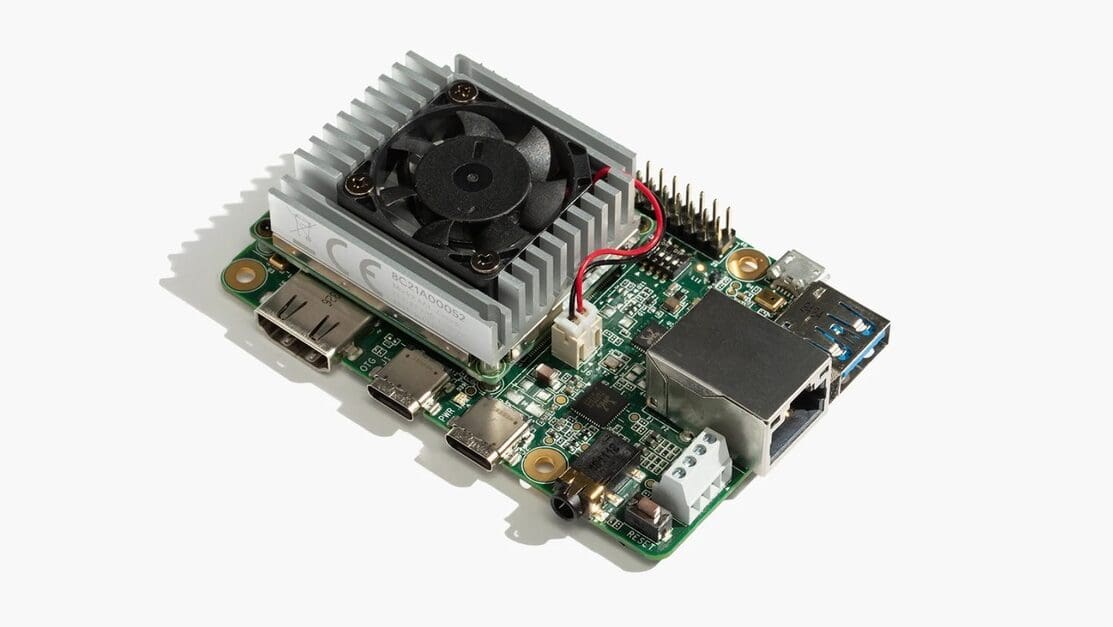
Made for the creation of embedded systems, the Coral development SBC from Google also has a lot of processing power for machine learning and other robotics applications. On the Google Coral platform, you have access to many software tools and pre-compiled models for building devices with local AI. While the price of similar boards usually starts around $180, this one can be yours for around $130 – a nice saving you can put towards other components of your robot.
What makes this board stand out is its scalability from prototype to production. Once you have the compilation, you can replicate it to several SOM modules and facilitate the installation of hardware. This is also a great option if you intend to use a Google service such as TensorFlow Lite, as you won’t need to build it from scratch, just load it into the module. With this board, you can also expect high-speed and low-power ML inferencing with 4 TOPS at 2 W.
Following the 40-pin standard, you won’t be disappointed with this board’s connectivity. Ports include an ultra-Secure Digital Host Controller (uSDHC), IOMUXC, UART, I2C, SPI, 16 GPIO lines with interrupt capability, and 4 PWM lines. For more details about the hardware, you can also consult the datasheet.
- Processor: 1.5-GHz 64-bit NXP i.MX 8M SoC
- GPU: 1-GHz 32-bit integrated GC7000
- Memory: 1- or 4-GB 32-bit LPDDR4
- Price: ~$130
- Size: 48 x 40 mm
Seeed Odyssey X86J4105
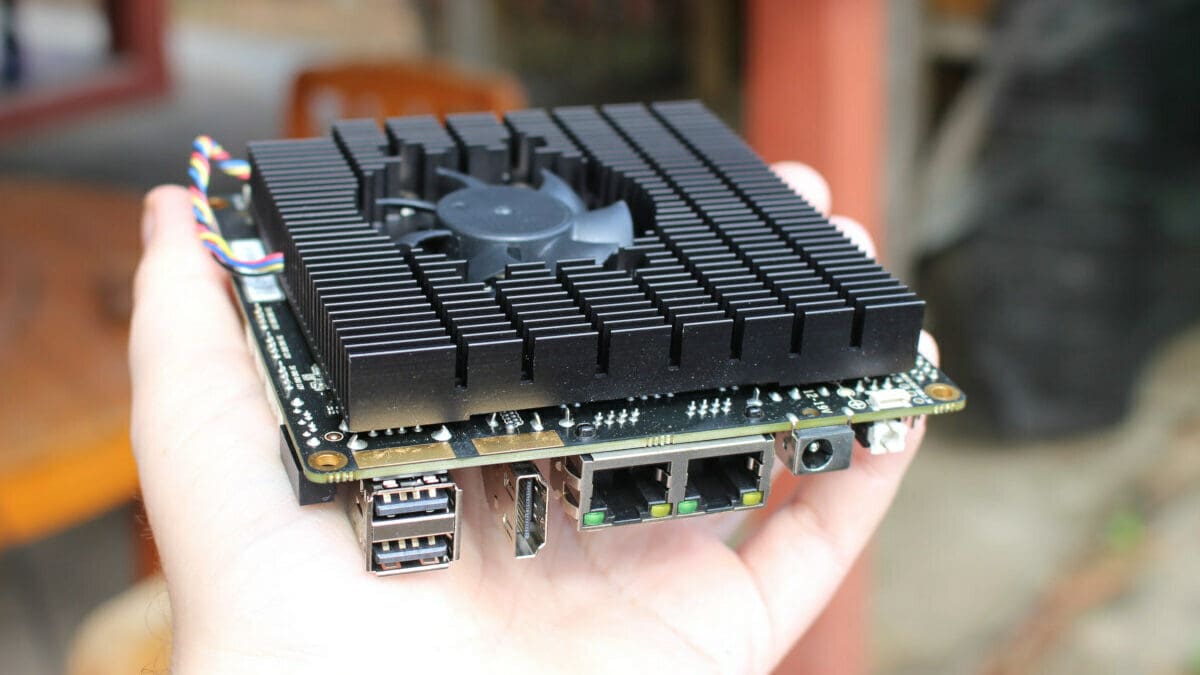
Next up, we have an incredibly versatile SBC. The Odyssey X86J4105 brings a robust package full of powerful options that even includes 5G cellular network connectivity and a SIM chip. With processing power to smoothly run 4K videos on Windows 10 and Linux, this card really impresses. You can also find important features for robotics applications like Gigabit Ethernet and M.2 key.
The list doesn’t end there though – with a huge GPIO header composed of 40 Raspberry Pi-compatible pins and 28 Arduino-compatible pins, this card is sure to meet many robotics needs. If you have been undecided so far, perhaps you need to look no further.
In addition to its M.2 storage, this piece has a MicroSD slot and SATA III connector for three additional storage units. You will surely not be lacking in space with the board. You can also consult the online specifications for more details about this board.
- Processor: 1.5 or 2.5-GHz 32-bit Intel Celeron J4105
- GPU: 600 or 750-MHz Intel UHD
- Memory: 8-GB LPDDR4
- Price: ~$220
- Size: 110 x 110 mm
Rock 5 Model B
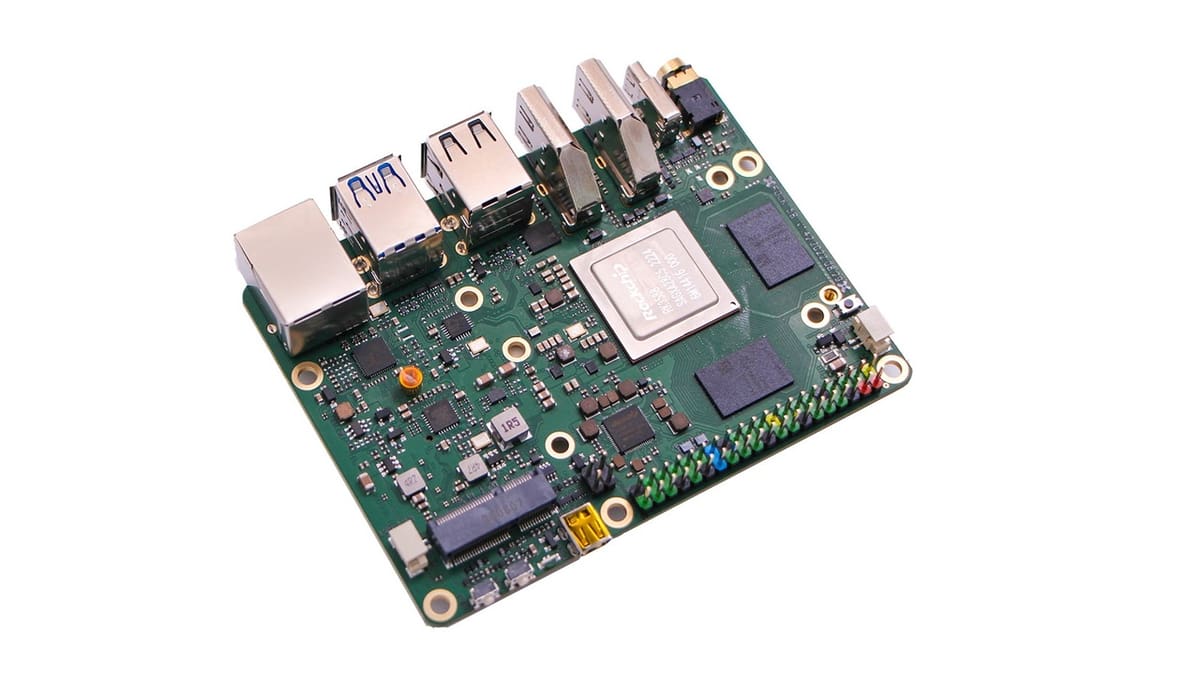
The name Radxa comes from the Latin word radix, meaning root – and this SBC has its roots deep in the field of robotics. Introduced for the first time in 2022, The Rock 5 Model B has been winning over many fans with its robust features and larger size relative to the Raspberry Pi. Despite being larger, it does not come with integrated Wi-Fi and Bluetooth.
This board has two M2 key slots for storage expansion and other peripherals like Wi-Fi and Bluetooth, along with a dedicated PoE header, which can be very useful. Although it has two HDMI ports, the USB-C port can also be used as a display port. With its exceptional video performance, it has impressed fans of PlayStation 2 emulators as it’s capable of running most games with a good frame rate, though this board can do much more than that.
With 8K video support, 6 TOPS NPU, and Wi-Fi 6E and Bluetooth 5.2 support, this SBC doesn’t miss out on anything. There are a few more tricks up its sleeve: its header supports a wide range of interface options such as UART, SPI, I2C, PCM/I2S, SPDIF, PWM, and ADC. If you’re curious to know all the details, you can also check online resources for hardware information, schematics 1.3v, and GPIO connectors.
- Processor: 2.4-GHz 64-bit Rockchip RK3588 SoC
- GPU: 600-MHz Arm Mali G610 MP4
- Memory: 4- to 24-GB 64-bit LPDDR4
- Price: ~$160
- Size: 100 x 74 mm
LattePanda 3 Delta
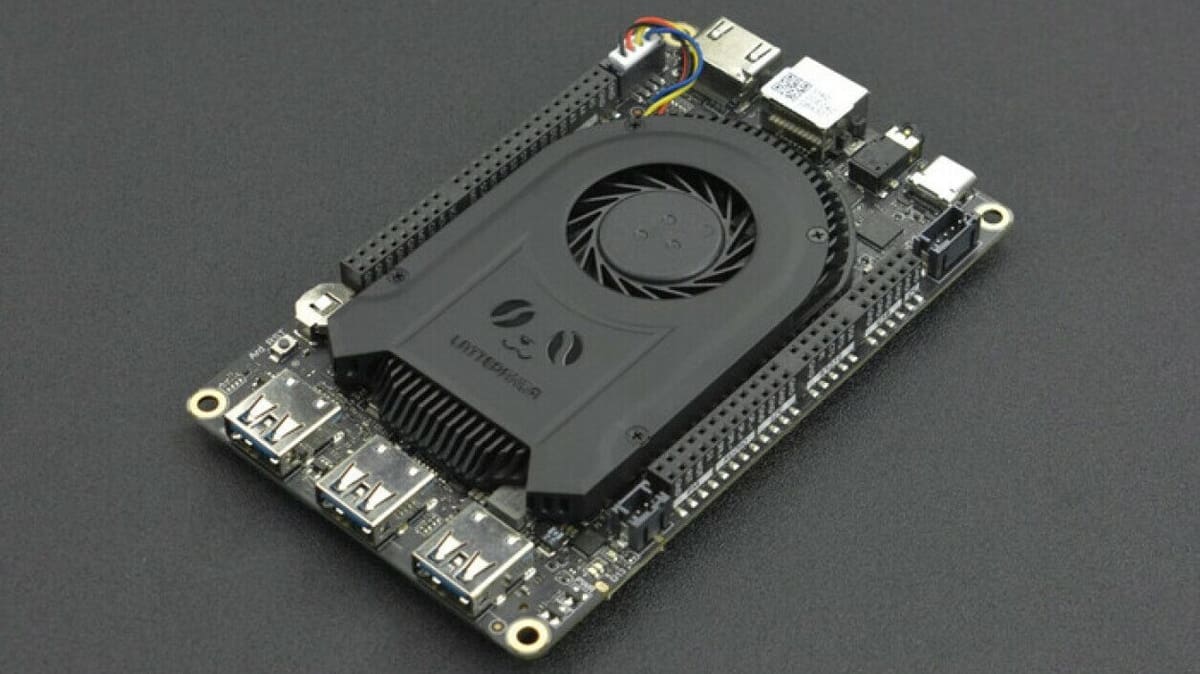
If you love Arduino but need an SBC, you can get the best of both worlds with the LattePanda 3 Delta. With an integrated Atmel ATmega32U4 (Arduino Leonardo) controller and reset button, you can easily test and modify your projects in Python running on either Windows 10 or Linux.
There are many other features on this board that make it a great choice for robotics, including having a BIOS similar to that of common desktops. It also contains an interesting tool called Watchdog that will help the system reboot when not responding or crashing.
To get started, there are really cool projects on the manufacturer’s website such as a facial recognition program and a 3D printer server, to name just a couple.
When it comes to the headers and pins, you can expect 12 analog inputs, 23 digital input/output (7 PWM), UART, I2C, SPI, audio connector, 4-pin RS232 header, fan port, 4-pin 1.25 mm PWM 5-V, and 4-pin power and switch header. More details on the board are available in the manual and online specification sheet.
- Processor: 2.9-GHz 64-bit Intel Celeron N5105
- GPU: 800-MHz Intel UHD
- Memory: 8-GB LPDDR4
- Price: ~$280
- Size: 125 x 78 mm
Khadas VIM 4
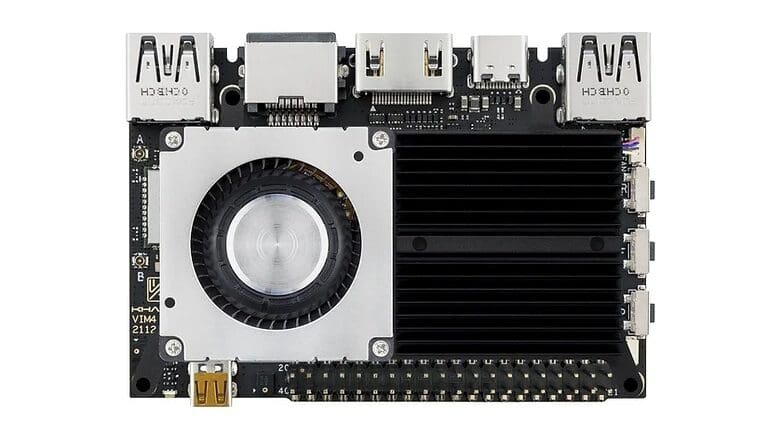
Sometimes your space is limited but you still need a powerful device. The VIM4 manages to overcome size limitations to deliver some really cool resources. The most notable features are the Wi-Fi 6, the “Wake on Lan” function, and a tri-axis digital accelerometer sensor.
A unique feature of this board is the Mini-HDMI input, while other boards have multiple outputs but no input options. This feature can certainly help in projects with an HMDI video signal, allowing you to directly capture videos up to 4Kp60 resolution.
Installing an operating system on this board is very easy because the card comes with “OOWOW”, an embedded service to install your preferred OS directly from the cloud. Of course, it also has a GPIO header with USB, I2C, I2S, SPDIF, UART, PWM, ADC, SWCLK, and SWDIO. It’s certainly worth checking the technical datasheet to evaluate if this board meets all your robotics needs.
- Processor: 2.2-GHz 64-bit Amlogic A311D2
- GPU: 800-MHz ARM Mali-G52
- Memory: 8-GB 64-bit LPDDR4X
- Price: ~$220
- Size: 82 x 58 mm
PocketBeagle
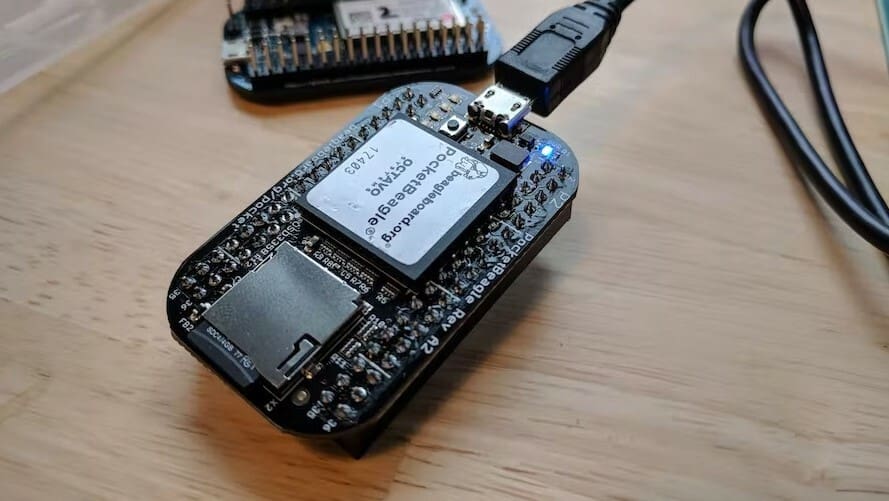
This is an option that shouldn’t be overlooked. Measuring less than 40 mm, the PocketBeagle is a low-cost complete Linux computer with enough flexibility to tear down project limitations. With 72 pins on the header, there will be no lack of space for whatever part or component your robotics project calls for.
For some projects, there’s no point in having a big, powerful computer that takes up space add adds weight. The PocketBeagle is a great option to demonstrate that small boards can still accomplish great things.
There are a bunch of cool project ideas on the PocketBeagle website for you to explore its capabilities yourself, such as an autopilot controller, a text-to-speech device, a quadrupedal spider robot, or a BeagleG CNC.
The expansion header has a USB 2.0 OTG, 8 analog inputs, 44 digital GPIOs, 3 UARTs, 2 I2Cs, 2 SPIs, 4 PWMs, 2 CANs, 23 programmable real-time units (PRU), 3 voltage inputs, 2 voltage outputs, and power and reset button I/Os. For more details, check out the technical specifications sheet.
- Processor: 1-GHz 32-bit Octavo Systems OSD3358
- GPU: 200-MHz PowerVR SGX530
- Memory: 512-MB 16-bit integrated DDR3
- Price: ~$50
- Size: 56 x 35 x 5 mm
Asus Tinker Board 2S
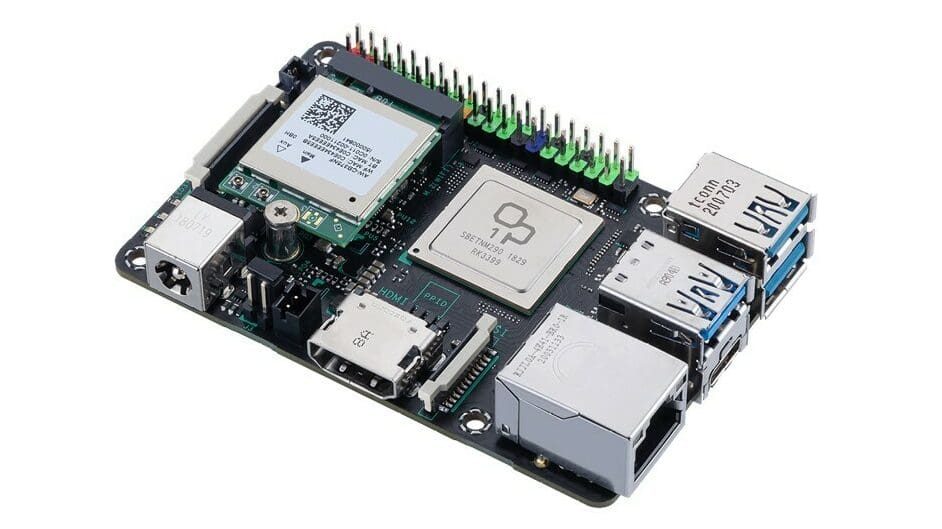
Launched in November 2020, the ASUS Tinker Board 2S drew attention with its Mali-T860 GPU designed for complex graphics with support for OpenGL 3.0/3.1, OpenVG 1.1, OpenCL, and other frameworks. Although the GPU isn’t as powerful as some other options on the list, this SBC has features that can help out a lot for certain robotics such as support for dual 4K display.
Maybe you’re wondering how this is possible when you can only see one HDMI video output, but the secret is that the USB-C port can be converted to a video output. Despite the focus on video performance, this card may leave a little to be desired when it comes to creating a playable game emulator. But the full set of features combined with the large header grants this board good potential for many other types of projects.
In terms of pins and I/O connections, this board has Gigabit Ethernet, M.2 key with 802.11 a/b/g/n/ac wireless, Bluetooth 5.0 (2T2R), 28 GPIO pins, SPI, I2C, UART, PWM, PCM/I2S, S/PDIF TX, recovery, power-on, debug UART, DC fan, and RTC battery headers. If necessary, you can also consult references on its schematics or the user manual for more technical details.
- Processor: 2.0-GHz 64-bit Rockchip RK3399
- GPU: 800-MHz Arm Mali T860 MP4
- Memory: 2- or 4-GB dual-channel LPDDR4
- Price: ~$200
- Size: 85 x 56 mm
Odroid-H3+
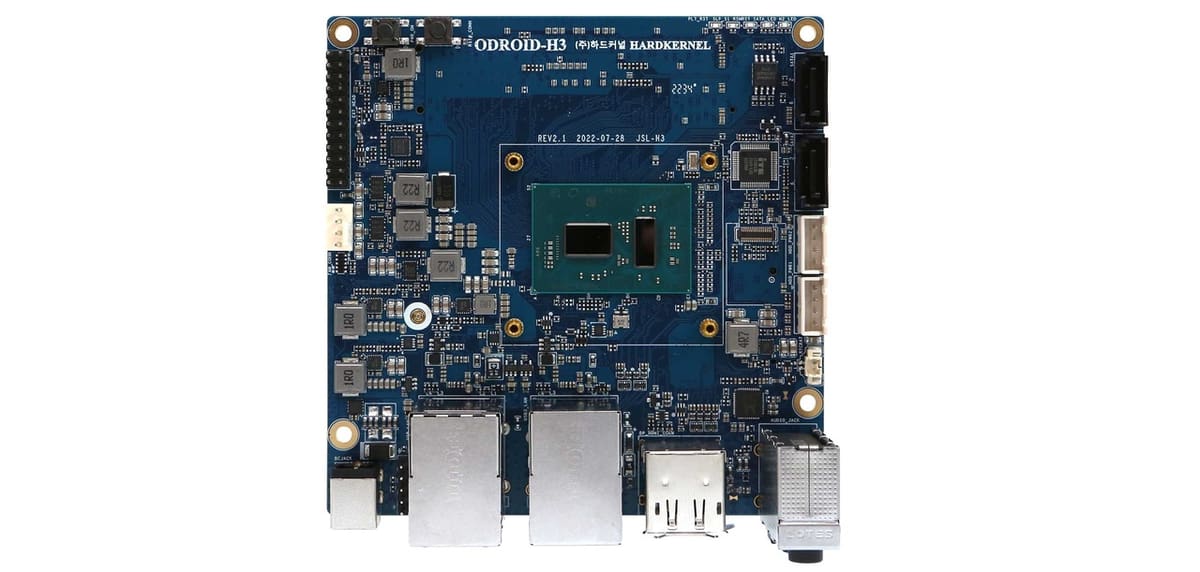
With impressive processing power combined with a nice selection of header pins, the ODROID-H3+ is designed to make everyday robotics life easier. Not to mention its DDR4 slots, SATA III ports, 2.5-GB Ethernet, M2 storage, and video output that makes this board quite the package.
Making a robot sometimes means having to use what you have at hand. With this board, you can do just that thanks to its SATA HDDs and large memory. While the finish is very reminiscent of a desktop card, it’s capable of 4K video and game emulation. That might have you thinking, “So what’s the difference between using a computer and this board?” Well, a computer will certainly spend more than 2 W when idle, and much more than 18 W when running applications, emulations, and games. Saving energy in a robot is always positive.
Like most of the options we have on this list, this one also has a 24-pin GPIO header for USB 3.0, USB 2.0, UART (TXD/RXD/RTS/CTS), I2C (SCL/SDA), and HDMI-CEC. To see all the details of this board up close, you can consult the Odroid Wiki and the technical datasheet.
- Processor: 3.3-GHz 64-bit Intel Celeron N6005
- GPU: 900-MHz Intel UHD
- Memory: Up to 64-GB DDR4
- Price: ~$165
- Size: 110 x 110 x 47 mm
Udoo Bolt V8
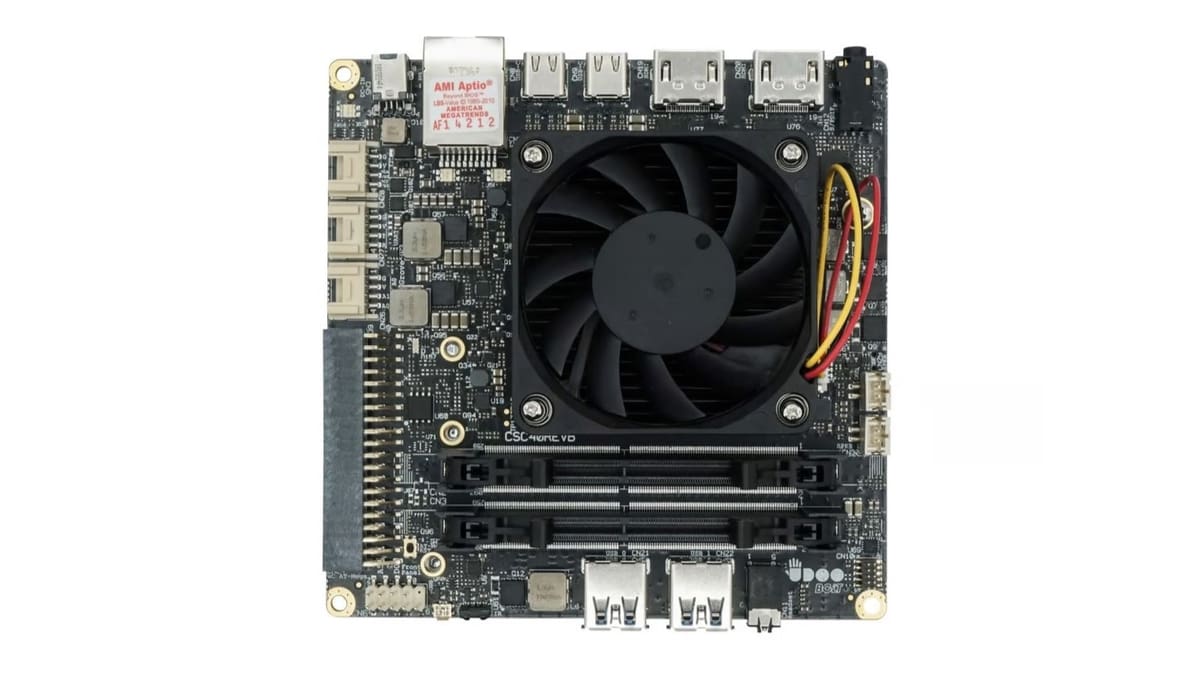
The Udoo Bolt V8 has impressive robotics features such as Arduino Leonardo compatibility and its 40-pin header. All of the Udoo Bolt family uses AMD Ryzen processors and the V8 has an AMD Radeon Vega 8 GPU that delivers excellent results in emulation and games.
The Bolt V8 is slightly larger than the Raspberry Pi 4. Even so, it manages to deliver up to four video outputs (two HDMI and two display ports), alt-mode USB-C, and a PCIe X4 Gen 3 interface.
As for the header and connections, this board features an ATmega32U4 microcontroller, several Arduino Leonardo-compatible I/O, including 12 analog inputs, 23 digital input/output ports (7 PWM), UART, I2C, and SPI. On the embedded controller, you also have access to 2 UARTs, 2 I2Cs, an SPI, a keyboard scancode, a fan controller, and 10 GPIO pins. Further details can be found in the Bolt manual and technical datasheet.
- Processor: 2-GHz 64-bit AMD Ryzen V1605B
- GPU: 1.1-GHz AMD Radeon Vega 8
- Memory: Up to 32-GB 64-bit dual-channel DDR4 SO-DIMM
- Price: ~$550
- Size: 120 x 120 mm
License: The text of "The Best Single-Board Computers for Robotics" by All3DP is licensed under a Creative Commons Attribution 4.0 International License.
CERTAIN CONTENT THAT APPEARS ON THIS SITE COMES FROM AMAZON. THIS CONTENT IS PROVIDED ‘AS IS’ AND IS SUBJECT TO CHANGE OR REMOVAL AT ANY TIME.

